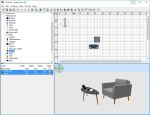- Home
- computer software
- Compare Computer Processors
How to compare computer processors?
Why should we compare computer processors? It is to get the best and fast system. In computer system, processor is one of the major components which determine computer performance. In fact, all the other parts are there to facilitate the activity of a processor.
So it is vital to compare processors when purchasing new system, since each type of processor has its own strength and weakness. Read more about basics of computer processor.
What are the main features of a computer processor?
So far several types of processors are introduced both from Intel and AMD (microprocessor manufacturers). To select the right processor from both types, you should understand the features of each processor type and how these features benefit you.
Here I have listed the most important processor features you should be aware of when comparing one processor with the other.
The following are the core elements we should understand when we compare computer processors.
Number of cores in a single processor
Most current systems come with a processor that has more than one core. Multi-core processor becomes the main stream in current systems. When we say dual-core processor, it means it has two processor cores in a single processor package.
If you want to run multiple programs at the same time, you should choose a system installed with this type of processor. For example, quad-core processor (four processors in a single package) is better than dual-core processor since it shares its work among all four processors. The more processor cores you have the better the performance of a computer.
In addition to the number of processor cores in a single computer, you must also check whether the processor supports Hyper-threading technology. This feature is important when running multiple programs simultaneously or running multi-threading applications.
Read more on the features of the best computer processor here.
Clock speed
Clock speed is a series of electronic pulses created at a predetermined time. The pulses affect the operation of a processor. The shorter the interval between the pulses, the faster is the processing activity.
Clock speed is measured in MHz or GHz. The higher the clock speed, the faster. A processor that operates at 4 GHz is faster than 3GHz and so on. Clock speed is the second factor you should know to compare computer processors.
Cache memory level, size and speed
Cache memory is a high-speed memory which holds frequently used data by a processor. It runs nearly the same or equal to the speed of the processor. A processor fetches information quickly from cache memory than the main memory.
The availability of cache memory is the backbone for fast processor. In the current systems there are three levels of cache memory: L1, L2 and L3. For better performance, always look a processor with better cache size and speed.
Front Side Bus (FSB) speed
Front Side Bus (FSB) is a system that connects a processor with the motherboard, specifically the North Bridge chipset and Memory. If the bus speed is faster, data transfers quickly between the processor and the chipset which directly affects processor activity time. The faster the bus speed, the better the performance of a CPU.
Conclusion
These are the main specifications of a processor you should be familiar with to compare computer processors and pick the right CPU. You don’t have to be ‘techie’ to do this, read the specification before buying any type of processor. The features are common both in Intel and AMD type of processors.


